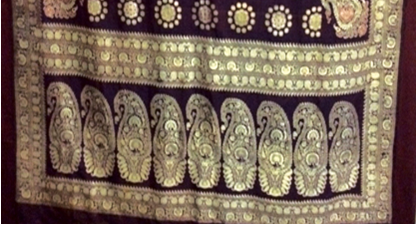
Crafts, Handlooms, Art, Craftspersons/ Artisanal
Mashru Weaving of Gujarat
Gaitonde, Priyanka
Issue #003,Summer, 2019
Mashru is a mixed fabric, comprising a combination of cotton and silk. It was used mainly by Muslim men, who were prohibited from wearing pure silk. It was woven all over India but the craft is now practised mainly in Gujarat. Mashru combines ikat patterns in stripes along with woven patterns, through the introduction of extra warp threads by depression of the warp threads. It is woven on a pit loom. Patan is one of the most important centres for the weaving. The weavers of Mandavi and Surat are known for their fine-quality weaves and patterns, used often by the tribal women of Sourashtra and Kutch for their cholis or blouses.
Project Undertaken:
REVIVAL OF MASHRU FABRIC; TRADITIONAL TEXTILE OF PATAN
Mashru is a warp faced satin weave fabric with a smooth glossy finish. Sometimes in the ikat technique, the striped pattern has small flower motifs or some geometrical patterns in alternate stripes. It is characterized by its bold colourful repeating patterns of stripes of various colours and sizes. The solid stripes with undiluted hues in dark pink, yellow, green, white, black placed next to each other are in high contrast. Structurally, the fabric has two faces, silk face and the reverse cotton face. This composite nature of the fabric makes it functionally as well as aesthetically promising. When used in garments the cotton layer in contact with the body forms an absorbent protective layer to the opulent and decorative exterior.
This is a preview. To access all the essays on the Global InCH Journal a modest subscription cost is being levied to cover costs of hosting, editing, peer reviewing etc. To subscribe, Click Here.



